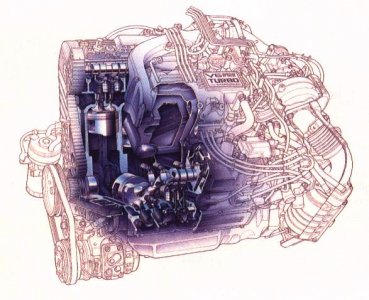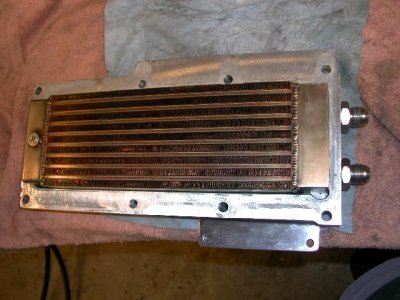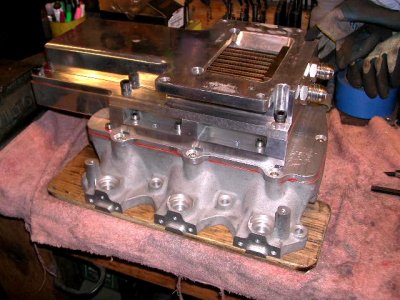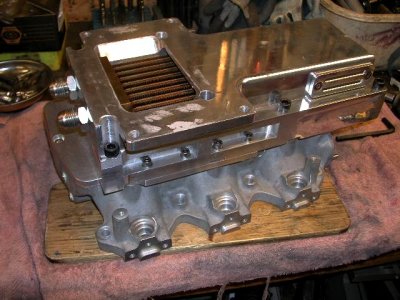Well finally got my pictures in the mail from the trip to Road Atlanta so I wanted to give an update on the car and my first time at this track.
All I can say is if you have not run Road Atlanta then you need to, I can say this now after running there for my first time. I did a two day event in November and on day one I was more than a little respectful of this course. I had seen many videos on YouTube as I studied up for this track that made me more than nervous about running my baby on this particular track. If you get a chance search YouTube for "Road Atlanta" and a good number of the videos that pop up are of crashed at Road Atlanta, and if you watch any of the videos pay very close attention to the skid marks on the track and the impact marks on all the tire walls and guard rails. They are everywhere. This is one scary track, until you learn it, then it is a thrilling high speed course with a nice rhythm. Did I mention it is high speed? I was hitting 147.3 mph in 5th gear on the back straight and that was even getting out of it way before the crest of the hill and before the braking zone going into 10A. Car has no aero mods and the front end gets a little fuzzy at 140mph.
On my last track day at Autobahn Country Club I had all kinds of issues with cooking my brakes, this time I added some large brake cooling ducts to the front and changed the fluid to ProjectMu from ATE Super Blue. That did the trick and the brakes were flawless all weekend long. The NT01's had about three track days on them before I got to Atlanta and by the end of the first day they were coming in nicely, not quite Hoosier levels of grip but I could run turn 1 flat after the turn in and they stuck with zero drama. They seem to be holding up well, as after the weekend the tires still have lots of life left on them. I think as long as they do not fall off too bad I feel like I can get at least three maybe four more weekends out of this set. We will see.
The Aerocharger Turbos running 6lbs of boost and 400whp were perfect the entire weekend with no issues. I would go out run the car, bring it back into the pits let her idle while I checked the tire pressures and temps then shut her down, that was it. No brake issues, no tire issues, just add fuel and wait for the next run. Exactly how every track weekend should be. On the track the car performed flawlessly, I did have to adjust a little for Road Atlanta. I found myself running out 3rd gear in a lot of places on the track and even though the car felt faster in 3rd my track times were quicker in forth and letting the torque of the turbos pull the higher gear. Oh at Road Atlanta on Sunday morning I had a little issue, they have noise limits until noon on Sundays. I got a black flag on my second session of the morning for the car being too loud. I have been on many tracks and have heard many cars, most of the cars in my run group were much louder than my car but I got the drive through and the warning for excessive noise. Anyway it was a good thing as it forced me to short shift and work on a perfect line instead of ringing out every bit of power in every gear. I actually was able to improve on my times and my line around the track. Then in the afternoon the noise issue was gone and the track was getting a little less crowded as some guys had headed home early. We were all gaining confidence in the track and were pushing harder, driving the lap times down. By days end I had pulled off a three pack of 1:41's and a golden lap of 1:40.06, not a bad time considering it was my first time there and on Saturday I was running 1:45's and slower. The big HP cars like the Z06's and the Viper ACR-x were running in the 1:39's and 1:38's. I still have great respect for turn 12 and never pushed it any harder than 90% down the hill and through the turn just too much concrete for me to let loose and push hard through that baby. There were guys in Spec Miata's pulling a car length on me in turn 12 but I did not care that turn defines "Pucker Factor". I know in my head I can go through that corner faster but I could not tell my foot to go any faster.
I had plans to retire the car from track use after the end of this track season but I may have a problem, I have already committed to the COTA's in Feb. and will most likely run the rest of the MVP Track Times calendar for 2013. I replaced my last NSX because it was a track rat and was way to hard for street use, so I will have to continue on with great restraint and leave this car much more street then track or I will end up back were I was before. What sucks is the guys I run with all have serious track weapons and even though I am down on power I know I could spank them if the car was setup like my old NSX for serious track duty, but I also know I will hate the car if I do that. The car is competitive in its current state but with the softer suspension I have now it just moves around a lot more under me than I am use too. Predictable but softer than my last setup. What I am giving up in the corner entry I am gaining back on the straights and corner exit, with the added torque of the turbos in the top of the rev range. The turbo does not drop off in power like the CTSC did as it heat soaked. With the CTSC you had two laps to get the tires up and you had two golden laps to run hard then you could feel the power loss on the next two laps if you tried to run hard. Now with the turbos and the WTA inter-cooler, IATs were rock solid at 118* after two warm up laps and you get full power till the checkers. The car was well matched to the Z06-CE that my buddy runs in the corners but while I could hang on too his bumper for a few laps the fact that he could pull me by three to four car lengths on the long back straight means all I can do is hang on, Road Atlanta has very few places to pass and they all require HP to get it done. The Z06 and the Vipers were all hitting 150-155mph on the long straight.
Just to give you an idea of the amount of elevation change in this track.
Chasing the Z06-CE
Some other pics of the car at speed



















